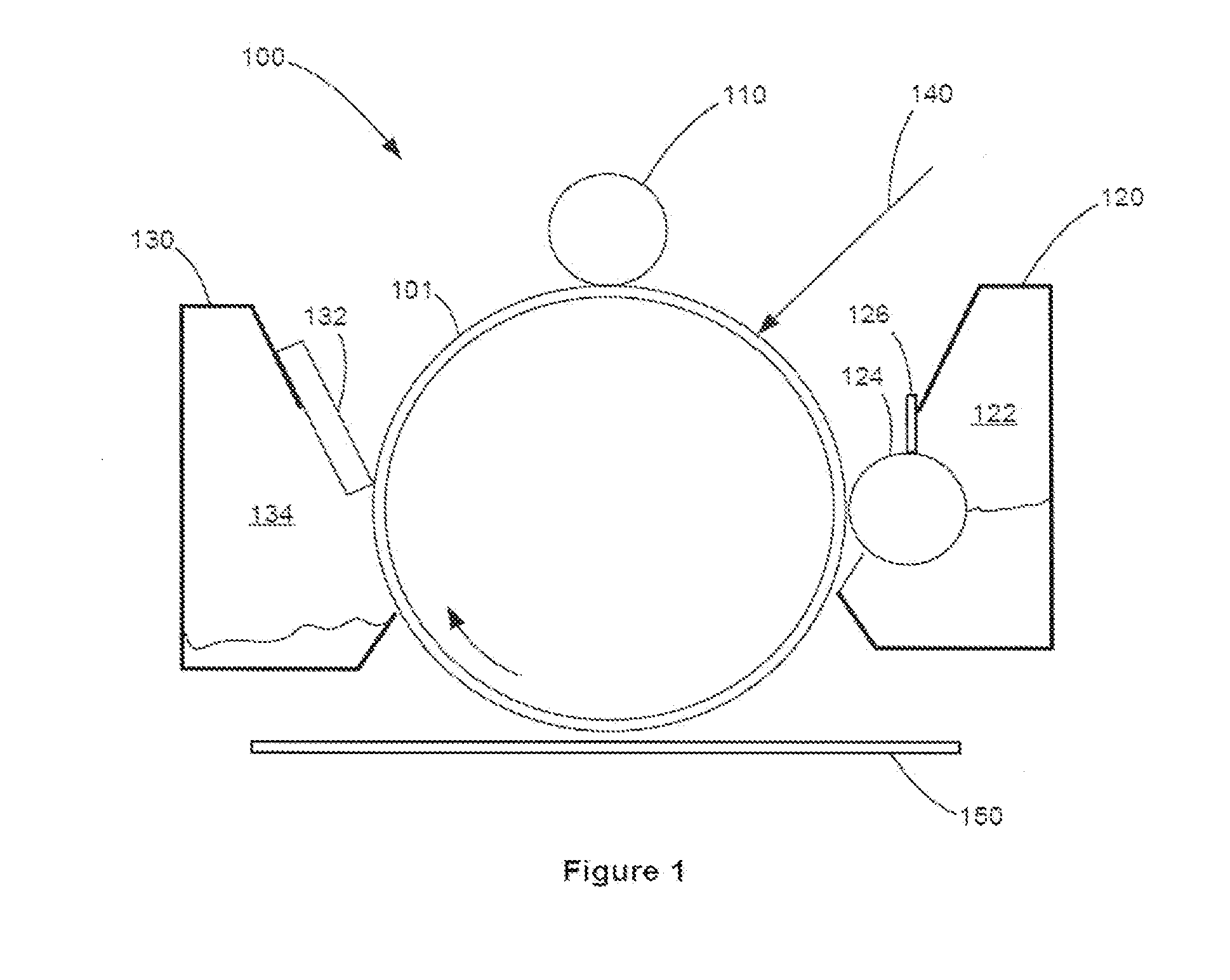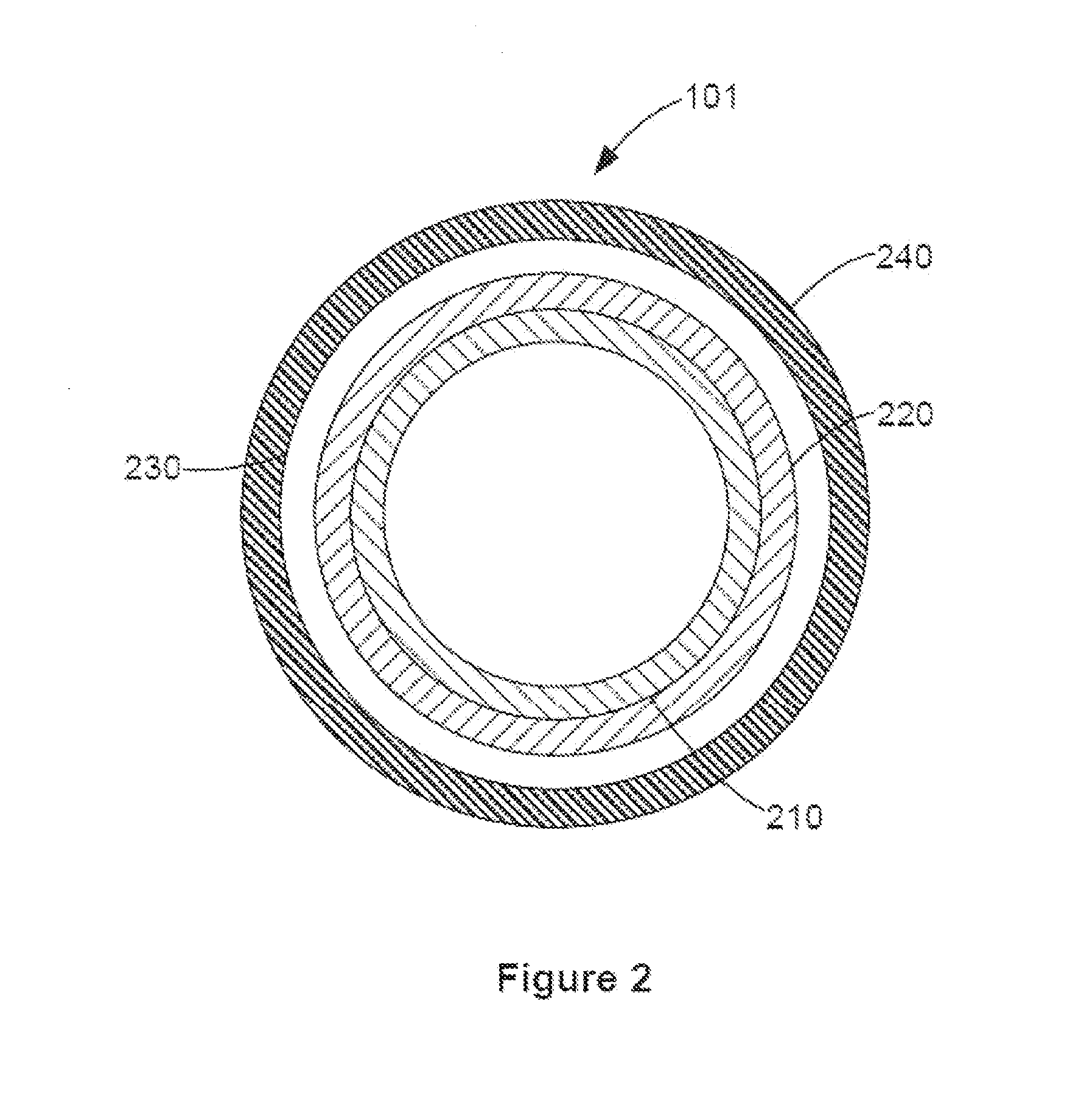Photoconductor Overcoat Having Radical Polymerizable Charge Transport Molecules and Hexa-Functional Urethane Acrylates Having a Hexyl Backbone
a photoconductor and charge transport technology, applied in the field of overcoat layer, can solve the problems of organic photoconductor drum failure mechanism, surface layer abrasion, surface abrasion, etc., and achieve the effect of improving the wear resistance of organic photoconductor drum and extending its service li
- Summary
- Abstract
- Description
- Claims
- Application Information
AI Technical Summary
Benefits of technology
Problems solved by technology
Method used
Image
Examples
example 1
[0050]The overcoat layer of the present invention was prepared from a formulation including a crosslinkable charge transport molecule containing two radical polymerizable functional groups (20 g) shown below:
a urethane acrylate resin comprising Hexyl-Based Urethane Acrylate 1 available from Sartomer and sold under the tradename CN968™ (20 g), ethanol (100 g) and CoatOsil 3509 (0.03 g). The formulation was coated through dip coating on the outer surface of the Example Photoconductor Drum formed as outlined above. The coated layer was then exposed to an electron beam source at an accelerating voltage of 90 kV, a current of 3 mA, and an exposure time of 1.2 seconds. The electron beam cured photoreceptor was then thermally cured at 120° C. for 60 minutes. The thickness of the overcoat was determined by eddy current measurement.
PUM
| Property | Measurement | Unit |
|---|---|---|
| thickness | aaaaa | aaaaa |
| thickness | aaaaa | aaaaa |
| thickness | aaaaa | aaaaa |
Abstract
Description
Claims
Application Information
 Login to View More
Login to View More - R&D
- Intellectual Property
- Life Sciences
- Materials
- Tech Scout
- Unparalleled Data Quality
- Higher Quality Content
- 60% Fewer Hallucinations
Browse by: Latest US Patents, China's latest patents, Technical Efficacy Thesaurus, Application Domain, Technology Topic, Popular Technical Reports.
© 2025 PatSnap. All rights reserved.Legal|Privacy policy|Modern Slavery Act Transparency Statement|Sitemap|About US| Contact US: help@patsnap.com



